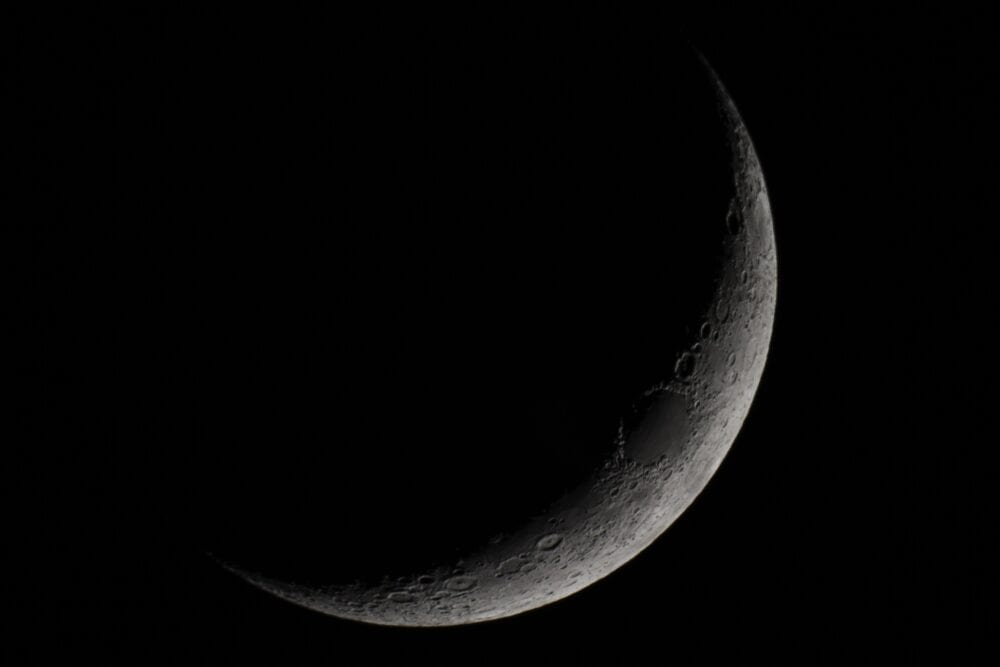
By Elizabeth Watts, PEEC Educator
Have you noticed any change in the days lately? No, I’m not talking about missing school or working from home! The days are getting longer. Last week was the spring equinox, and now we have more daylight than darkness.
This is a great time of year to start studying the sky. The sun sets earlier than in the summertime so kids don’t have to stay up so late. We are also lucky to live in a part of the country with dark skies, which allow us to see great things up above, even from our own backyards. Let’s explore what we can learn from looking at the sky.
Moon
As we all spend more time at home, one thing to observe is the phase of the moon. Tuesday, March 24, was the new moon. A new moon occurs when the moon is nearly in front of the sun. We aren’t able to see the moon at this phase because the sun is so bright. Every day for the next few weeks, the moon should look a little bit bigger. It will also be a little farther away from the sun, until we see a full moon, which occurs when the moon is opposite the sun. The full moon rises just as the sun sets. But until that time, we will see the moon in the sky during the day.
This is a great time to start a moon phase calendar. Every day, sketch what the phase of the moon is. You can use PEEC’s template, or you can draw your own. Try to notice a pattern. How long does it take to get to the full moon? How long does it take to get back to a new moon? Is the moon in the same position in the sky every day?

Planets
Have you noticed a bright star in the west in the past few months? If not, take a look! This bright light is actually not a star, but the planet Venus. It is the third brightest object in our sky, after the sun and the moon. Venus is very similar in size to Earth, but the thick atmosphere of Venus makes that planet the hottest in our solar system. Check out some information about Venus from NASA here.
If you have a telescope, you can even see phases of Venus, similar to the phases we observe on the moon. Even without a telescope, Venus and the crescent moon will be visible together after sunset tonight (March 28).
Constellations

Another thing that is changing with spring is the constellations we see at night. Many people are familiar with Orion, which is visible throughout the winter. Orion is easy to spot because of the three stars in the belt. It is still visible in the evening at this time of year, in the southwestern sky. Other constellations are also starting to appear. Leo the Lion is one that comes back in the spring. It is easy to recognize because the brightest stars look like a backward question mark. You’ll see it in the eastern sky in the evenings of late March.
There is also the Big Dipper, which you can use to find the North Star. The Big Dipper (which is part of the constellation Ursa Major, the big bear) is always visible in the northern sky, but moves around the North Star as our planet turns. You can make a star clock to use the position of the Big Dipper to tell approximately what time it is! Get instructions and download the star clock template here.
Tips for a Family Star Party
Not good at finding constellations or knowing the names of things? Don’t worry! The stars don’t care if you know their names.
- Make it fun to go look at the stars together.
- Bundle up to stay warm!
- See if you can notice any differences in the stars. Are some different colors? Are some brighter than others?
- Have everyone try to find their initials in the stars.
- Make up your own stories.
- When you go back inside, have hot chocolate or tea, and write down or draw your star stories.
Send your stories or questions to takeitoutside@peecnature.org.

Loved the template and the star clock. I’ve downloaded them both. Can’t wait to use the star clock to decide when it’s my bedtime.